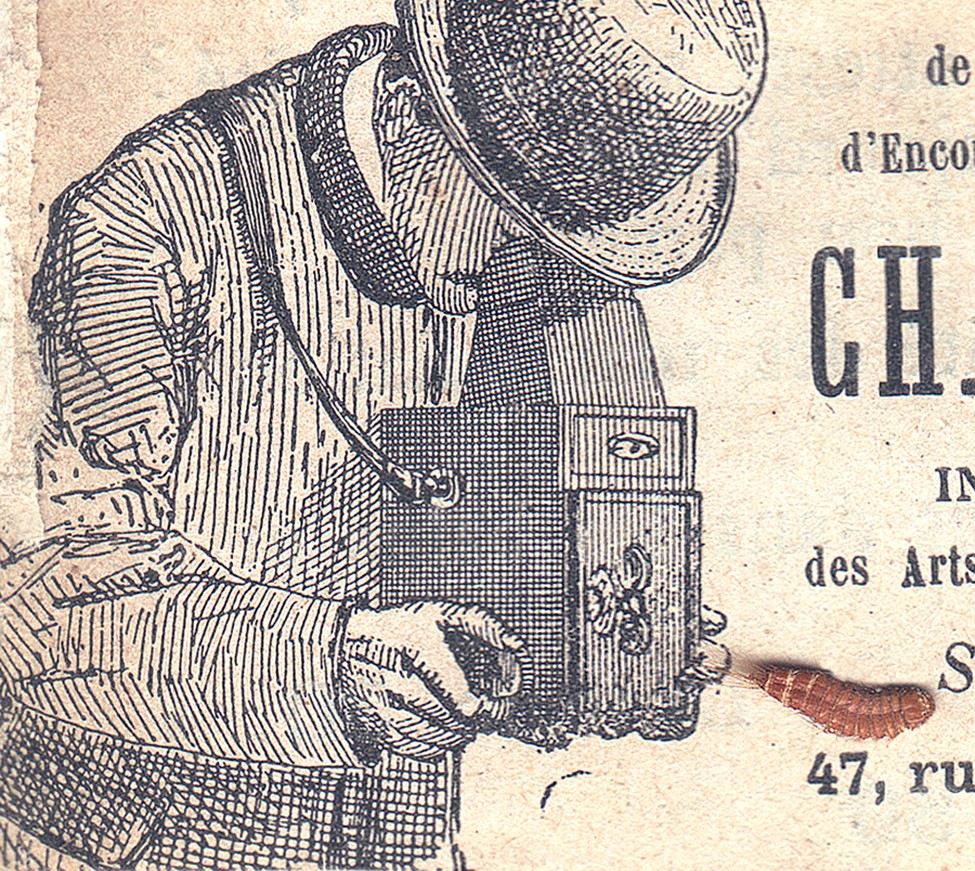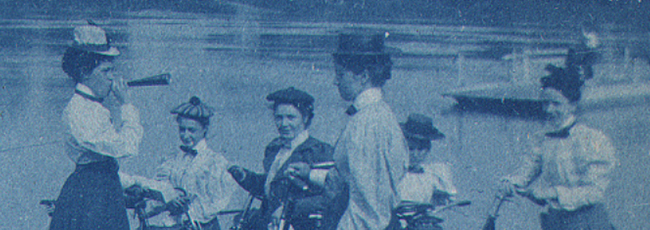Ok, I admit it. I found the little bugger opposite the page containing the engraving of this fashionably-dressed gentleman focusing and peering into his elegant camera. When I recently opened a parcel containing several European volumes from the late 1890’s-you know-the photo kind-I was not prepared for the disaster waiting inside. Misbound, with the bindings perished and outer paper covers secured with copious amounts of glue on the inner signatures upside down, I deemed the volumes immediately breakable in order to separate and archivally preserve the very fine gravure plates within.

1897: Man focusing unknown make camera at a silverfish (Lepisma saccharina,): detail showing wood engraved advertisement reproduced from French photographic journal: partial advertisement copy: NOUVELLE CHAMBRE A MAIN Système Londe & Dessoudeix: Mason Ch. Dessoudeix Lauréat de la Société d’Encouragement 1894 CH. BAZIN Ingénieur des Arts et Manufactures | Successeur 47, rue du Rocher Médaile D’Or Exposition Internationale de Photographie 1892 2 Médailles D’Argent Société Française de Photographie 1892
As a lover and caretaker of fine books, this is always the last resort. But occasionally, it is vital. Short of placing everything into a deep freeze, photographic material from any vintage, especially the old stuff, needs to be properly conserved for future generations. As for breaking a book, I’m sure many professionals would take exception to my approach, and I respect that. Certainly, all photographic conservation should be done on a case-by-case basis, and when in doubt, consult someone in the know. My own golden rules starts with wise advice I received from a George Eastman House curator many years ago: the first best defense for preservation is sometimes to do nothing at all. My own conscience however dictates intervention whenever I find photographic media in contact with the bad stuff. This usually takes the form of acidic materials in the shape of mat boards, backing boards made from real wood and other types of non-archival paper-pulp coming into direct contact with the front surface (recto) or rear support (verso) of fine photographs.
And the Silverfish about to have its picture taken? Possibly as old as the book, with its exoskeleton complimentary in color to the amber-colored adhesive used in the binding. He, she, or it probably had a good fill of the stuff before mercifully turning and playing dead for the next century or so.



